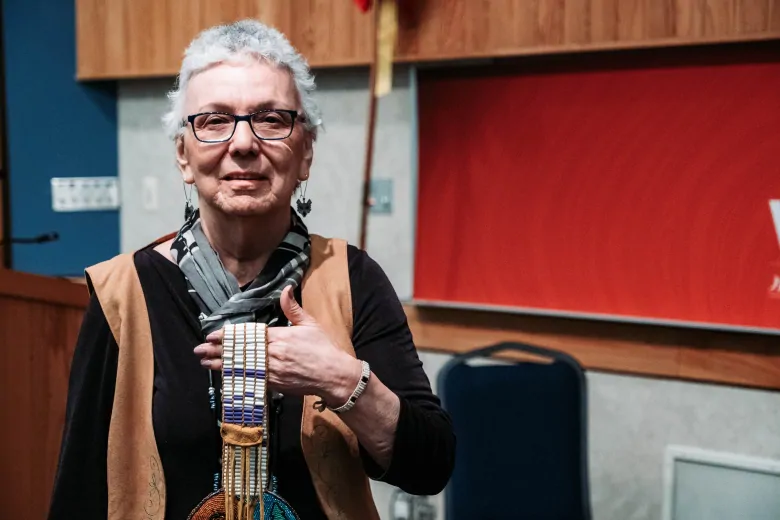Signing of Peace and Friendship Treaty staged to educate people

The signing of a Peace and Friendship Treaty was re-enacted — in languages the original Wabanaki signers would have appreciated — at a gathering Thursday aimed at educating people about the treaties of the 1700s.
Imelda Perley, also known as Opolahsomuwehs, believes the relationship between Indigenous and non-Indigenous peoples would benefit from a better understanding of the treaties between the Wabanaki Confederacy nations and the British Crown.
“It’s missing in their understanding because it was never part of the curriculum before,” Perley said of treaty education.
“Even our own people sometimes don’t believe that there’s actually treaties.”
The treaty re-enactment on the University of New Brunswick campus took place in the Mi’kmaq and Wolastoqey languages.
“This is telling our people that we have a language, we had a language that should have been part of the document but it was never considered to be put into our language,” said Perley, of Tobique First Nation, or Neqotkuk.
“This re-enactment today was to make a statement that our language needs to be a part of that treaty document.”
The re-enactment included the use of wampum belts, which were loomed with beads made from quahog shells and are recognized by their purple and white colours.
The wampum belts were a form of documentation used by the Wabanaki Confederacy, as well as other Indigenous nations in addition to oral history.

Perley said the few surviving historical wampum belts that exist are housed in museums and hopes one day they will return to their rightful owners.
“Wampum belts are now considered museum pieces and archaic, but what’s really important is to revive them so we can read those stories that our ancestors left behind for us,” she said.
Amanda Reid, the vice-president of Indigenous engagement at UNB, said she thinks bringing awareness to non-Indigenous Canadians as well as Indigenous people is important to relationship building.

“I think many people don’t realize that without the Peace and Friendship Treaties in this territory, but also with other treaties signed across Indigenous lands, that Canada could not have been formed as a country,” Reid said.
Reid’s focus at University of New Brunswick is to help the university implement the Truth and Reconciliation commission’s calls to action.
The Mi’kmaq-Wolastoqey Centre event continues on Friday.



